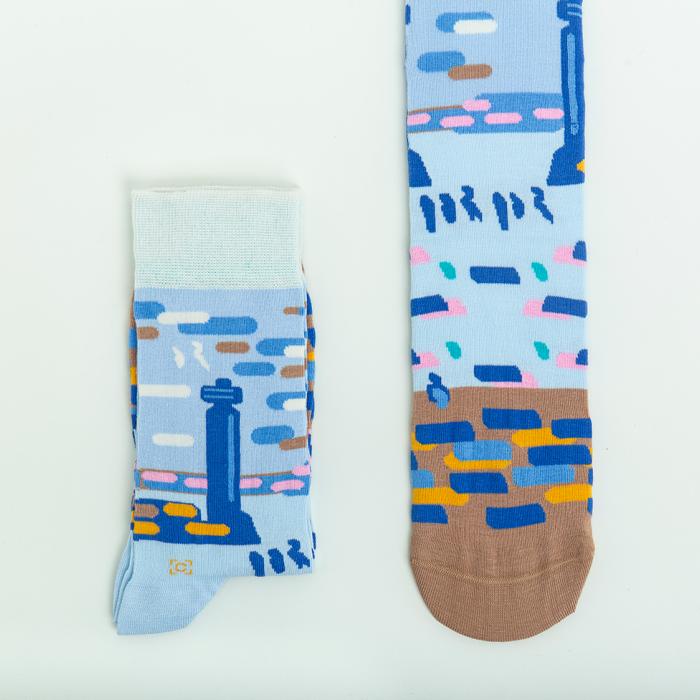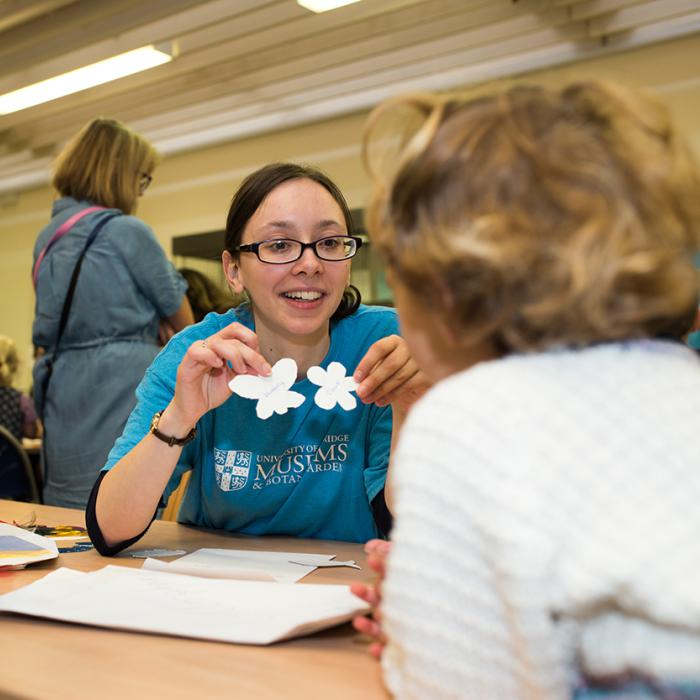The Museum of Classical Archaeology is pleased to host an exhibition of work by learners undertaking the accredited photography course at Cambridge Community Arts for the third year running.
For artist Loukas Morley, our Cast Gallery is a lovely haven of stillness that offers a beguiling backdrop for an exhibition of his own work. In positioning both newly made and existing works in gaps and spaces within the gallery, he will create a series of installations which give contemplation to the very stillness of time, embodied in the silent classical casts.
The exhibition runs from 6 June to 6 September. The Museum of Classical Archaeology is open Tuesday - Friday (10am - 5pm) and Saturdays (10am - 1pm) during University term time.
Showcasing rare and exquisitely decorated fans from the collection of the Hon. Christopher Lennox Boyd, allocated to the Museum by H.M. Government in lieu of inheritance tax in 2015, this display reveals the techniques behind the making, investigation and conservation of fans.
Evolution is constantly producing incredible structures, shapes and patterns – both in the inner workings of animal bodies and in their external appearances.
This exhibition of artworks by Jonathan Kingdon showcases a lifetime of observations in nature, through stunning paintings, sculptures and drawings, displayed amongst specimens of the animals that inspired them.
Beggarstaffs was the pseudonym used by the British artists William Nicholson and James Pryde for their partnership in poster design and other graphic work in the 1890s. Pryde and Nicholson’s Beggarstaff graphics and their later individual works as painters have never before been shown together. This groundbreaking exhibition will explore for the first time the fascinating way in which their reciprocal influence and shared love of striking subject matter worked on their very different temperaments to inspire two remarkable artistic careers.
A creative development seminar for education professionals inspired by Kettle’s Yard’s partnership with Oscar Murillo’s Frequencies project, with project producer Clara Dublanc.
See canvases produced by school children in Cambridge in their classrooms as part of Oscar Murillo’s Frequencies project. Displayed in the learning studio.
To date over 300 schools in 31 countries have participated in Frequencies. Over the last six months, Cambridge based schools Milton Road Primary School, Newnham Croft Primary School, the Stephen Perse Foundation Schools, Dame Bradbury School and Ridgefield Primary School have been participating in this project.
Join Eliza Spindel, Curatorial Assistant, in the research space to find out more about artist Alan Reynolds.
Hear about the paintings and prints by Reynolds and find out more about the works that he collected.
FREE, no booking required
Meet in the Research Space on the first floor 5 minutes before the talk begins.
Join us for an interactive creative afternoon developing ideas around the themes of journeys and movement explored by artist Oscar Murillo. Make your own collage painting inspired by our current exhibition Violent Amnesia.
Learn mark making, collage and other techniques used by Murillo, and gain a deeper understanding of his practice.
£30 (£25 concessions), booking required
Join University of Cambridge research fellow Nicola Kozicharow (History of Art), who will respond to the current Oscar Murillo exhibition and its themes.
FREE, come along.
No booking required.
Meet in the galleries 5 minutes before the talk begins.
The galleries are fully accessible. They are situated on the ground floor and can be accessed by stairs or a ramp from the entrance area.

